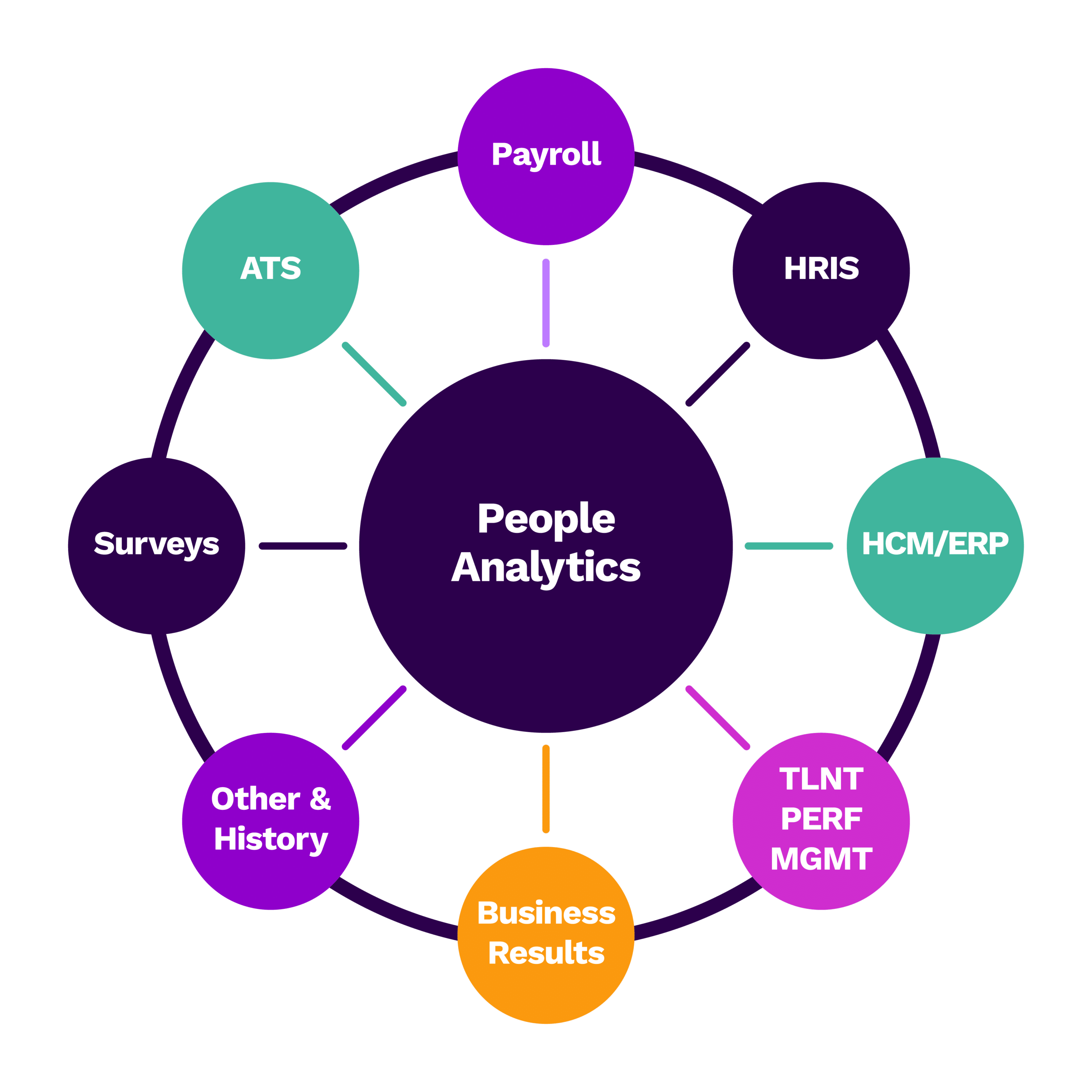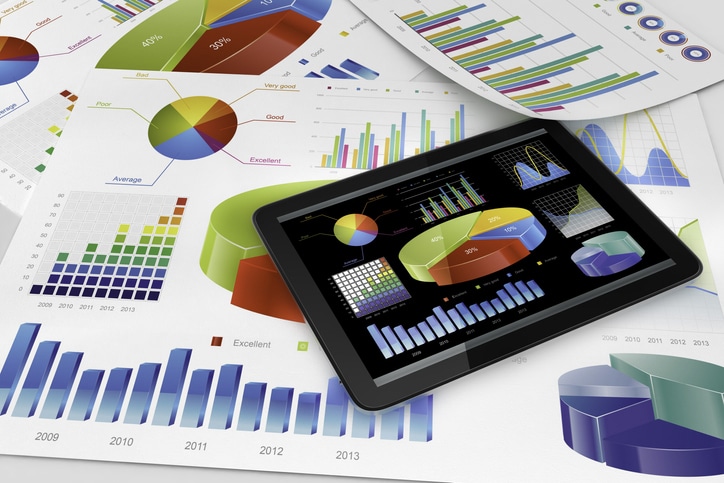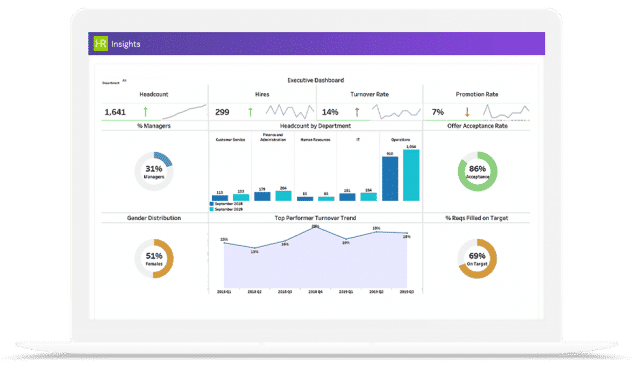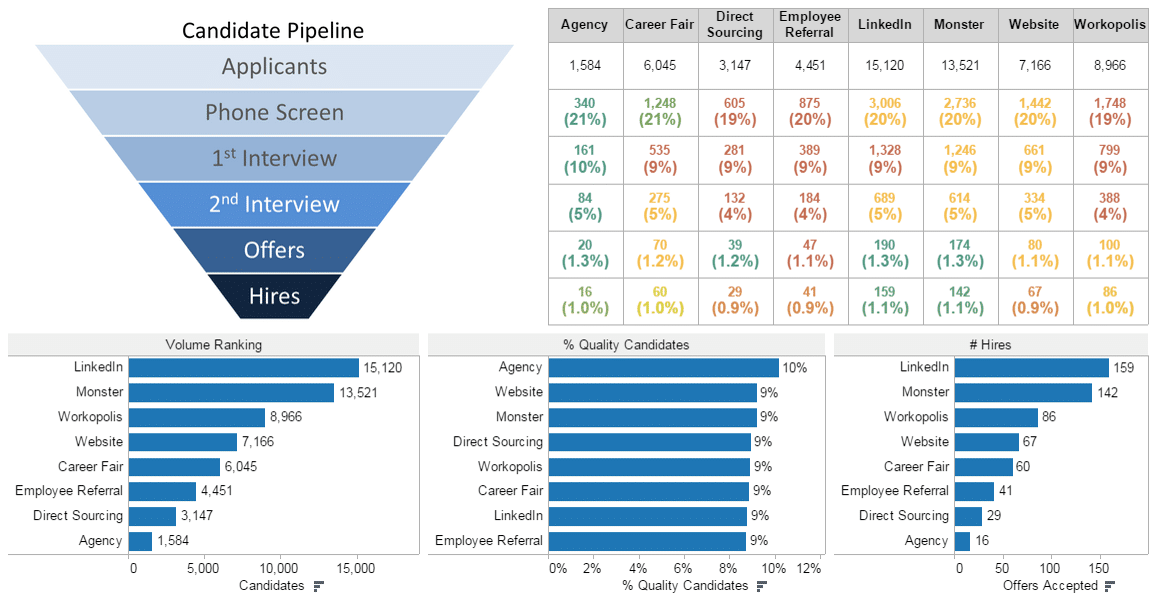In today’s fast-paced busienss landscape, organizations like yours must adapt quickly to remain competitive. An agile HR strategy that leverages people analytics is a crucial driver of success.
But exactly what is people analytics?
It’s a rapidly emerging area of HR, yet so many people aren’t clear on what it is. Read on to learn more.
People analytics defined
People Analytics is a data-driven approach to human resources management. One that uses data and insights to inform decision-making, optimize processes, and drive business outcomes. It involves the systematic collection, analysis, and interpretation of people-related data to gain valuable workforcce insights.
Key Components of People Analytics
People data: People analytics relies on a wide range of data sources related to employees and candidates. This includes core HR data such as employee demographics, job titles, and salaries. It also includes recruiting and sourcing data such as candidate sources and recruitment outcomes. Additionally it may include learning and development data, employee engagement and satisfaction data, performance reviews, and more
Business outcomes data: In addition to people data, people analytics also incorporates data related to business outcomes. This can include sales performance, customer satisfaction metrics, productivity measurements, revenue and profit data, and other key performance indicators (KPIs). Really, any key data relevant to an organization’s goals.
Data analysis and insights: The collected data is analyzed using statistical methods, data visualization tools, and techniques to identify patterns, trends, and correlations. By continuously analyzing the data, you can uncover valuable information (insights) to influence strategic decision-making.

Benefits of People Analytics
While there are many ways to leverage people analytics, a few of the most common are as follows:
Make smarter hiring decisions. With people analytics, you can identify effective recruitment channels, improve candidate selection processes, and predict the success of potential hires. Consequently, people analytics lead to better hiring decisions.
Identify and retain key talent. Analyze employee turnover rates and identify factors that contribute to attrition. Doing so allows you to develop target retention strategies to keep top talent engaged and committed.
Invest in the most impactful HR and talent programs. Similarly, with people analytics you can evaluate the effectiveness of investments like training programs. You can also identify skill gaps and optimize employee performance. All of which hel lead to increased productivity.
Maximizing ROI through People Analytics
In summary, people analytics provides valuable insights to optimize HR spending and maximize ROI. By analyzing metrics such as employee turnover rates, engagement levels, and performance reviews, you can identify areas for improvement. And even prioritize initiatives to drive better outcomes.
HR system reporting typically lacks information beyond transactional, snapshot-in-time information from its single set of data. And Excel-based reporting is insufficient for HR analytics. It’s also extremely time-consuming to keep Excel reports up-to-date. People data is dynamic data. HR systems don’t always connect to each other and often utilize different naming conventions. As a result, organizations need more powerful solutions to extract actionable insights. Hence the growing interest in people analytics.
Transactional Reporting or People Analytics
Transactional reporting offers single-dimension insights and metrics, limited to the data captured within that specific system. On the other hand, people analytics opens the door to a multidimensional data discovery experience. How? By drawing from a unified source of HR, talent, and people data.
With people analytics, you gain powerful segmentation capabilities that cater to your spur-of-the-moment needs. You can do things like analyze trends, View data from new perspectives. Aggregate information and drill down into individual records and criteria-based lists. Furthermore, you can even present your findings in visually appealing ways.
In short, the distinction lies in the level of depth and sophistication. People analytics empowers you to unlock the full potential of your data. Most importantly, it provides you with a comprehensive and insightful perspective far beyond the limitations of transactional reporting.

CHECK OUT THIS INFOGRAPHIC
See how HR data and analytics are like an iceberg. Standard reporting sits above the surface, yet valuable people analytics lies below.
The Universal Challenge – Disconnected and Disparate Data
A universal problem in HR is the scattered nature of people data across various islands. Each represented by different transactional HR tech systems. These islands of data grow continuously over time, thereby creating disparity in the data. Most importantly, this makes it challenging to extract valuable insights. However, combining and connecting multiple data sources can provide a multi-dimensional view of the data. This leads to better decision-making via rich, valuable insights. But managing, connecting, and combining HR data from disparate systems is complex. And it also requires guidelines for data security and confidentiality. After all, people data is sensitive data.
Handling this much data can consume lots of resources and time. HR teams often spend hours on spreadsheets and BI tools trying to make sense of the data. And there are additional challenges when it comes to people analytics. Consider:
Data Quality and Integration. Ensuring data accuracy, completeness, and integration from various sources can be complex and time-consuming.
Data Privacy and Ethics. Managing sensitive employee data while maintaining privacy and adhering to data protection regulations is critical. And not something you want to get wrong.
Skills Gap. Analyzing people data requires expertise in data analysis, statistics, and HR domain knowledge. HR teams may need to upskill or collaborate with data analysts.
Prioritization. Because data-driven HR decision-making is fairly new, it’s often a lower priority for BI and IT teams.
Change Management. Implementing people analytics may require a cultural shift within the organization to embrace data-driven decision-making.
Technology Infrastructure. Investing in the right technology and analytics tools is essential to effectively leverage people analytics.

Technology and Tools
Spreadsheets: The Classic Tool
Spreadsheets have long been a go-to tool for data management and analysis, including in the HR domain. While spreadsheets can be a great starting point, they come with limitations when it comes to handling large and complex datasets. Manually updating and managing data in spreadsheets can be time-consuming and error prone. Moreover, spreadsheets lack the advanced analytical capabilities required for sophisticated people analytics insights.
BI Tools: Beyond Basic Reporting
Business Intelligence (BI) tools have gained popularity in recent years. Why? Because of their ability to offer more advanced reporting and data visualization capabilities. BI tools allow HR teams to create interactive dashboards and generate various reports. This in turn males it easier to analyze HR data and present it in a visually appealing manner. However, BI tools may still fall short in handling complex HR data relationships and in-depth analytics required for strategic decision-making.
People Analytics Software: Empowering HR Transformation
For organizations seeking to take their people analytics to the next level, dedicated People Analytics software is the ultimate solution. Advanced software solutions are designed to handle vast volumes of HR data, integrate data from multiple sources, and provide comprehensive analytics capabilities. And some of these software solutions even come with analytics expertise from people.

Transactional Reporting versus People Analytics
Considering a People Analytics Solution?
Check out this Buyer’s Guide to make sure you’re covering all your bases.

People Analytics in Action
Here are some examples of how HR leaders and teams are using people analytics. From day-to-day activities to building strategies, analytics are used to make better data-driven decisions.
Monthly Summary Dashboard – A snapshot of the most important metrics
The Monthly Summary Dashboard provides HR leaders and company executives visibility into key HR metrics. This dashboard answers two key questions;
- Is our HR strategy meeting our overall business goals?
- How are our people programs performing in order to meet these goals?
The intent here is to provide a quick snapshot of the metrics that HR leaders can use for discussions with other company leaders. This is a great dashboard for weekly teams or monthly executive meetings.
Candidate Pipeline Dashboard
It can be a challenge to consistently and predictably attract, qualify and hire high-quality candidates as quickly and efficiently as your business requires. The good news is that candidate pipeline analytics will help you get there.
A deep look at candidate data provides visibility into what’s working or not working with your hiring process. In additional, it can pinpoint where you need to focus to successfully progress quality applicants to close.
At the core of Candidate Analytics, there are two key metrics: volume and conversion rates. Knowing your volume and conversion rates from initial candidate identification to offer accepted can provide insight into:
Attracting high-quality candidates: Analyzing the volume and conversion rates of the number of candidates that have progressed to each hiring stage lets you know if you are attracting enough high-quality candidates.
Identifying pain points in your process: Analyzing volume and conversion rates between each of the stages will let you know where there are bottlenecks and where candidates are dropping off.
With data-driven insights into Candidate Pipeline, HR leaders are armed with evidence and actions to address the challenges in the recruiting process. Analytics support and help facilitate the conversations with the business. For example, with hiring managers on the candidate criteria, and with executives on needed investment to support your talent acquisition strategy.
Candidate Pipeline Analytics focus talent acquisition strategies where they matter, evolve recruiting processes, and help communicate KPI’s with the business.


Diversity Dashboard
The Diversity Dashboard is a great place to get started with tracking DEI efforts. It provides leaders an overview of the current organization status (drillable into any segment or cohort you can imagine). And it also shows the progress of DEI programs and initiatives. HR and senior leaders use DEI dashboards as both a catalyst and gauge for progression and change.
The diversity dashboard answers questions such as:
- Are we attracting and hiring diverse talent?
- Are our compensation and promotion practices equitable?
- Are we developing and providing opportunities equitably?
- Are we retaining our underrepresented talent?
- Are we prepared for the future of diverse talent? (Succession Planning)
- Are we building an inclusive culture?
- How effective are we at this? Who benefits?
Actionable diversity analytics involves dashboards that combine data from different sources and systems. The diversity dashboard is a starting point for HR leaders to understand where they are today and where they’d like to be.
Learn more about Diversity, Equity, and Inclusion analytics with this guide.
Conclusion
In conclusion, your organization is rich with HR and people data. And while this can feel overwhelming, it also provides you a valuable resource for insights about what’s working and not working in your business. Dedicated people analytics software can provide you with a single source of truth for all your HR data. And a powerful resource for insights you can use to drive your business forward.